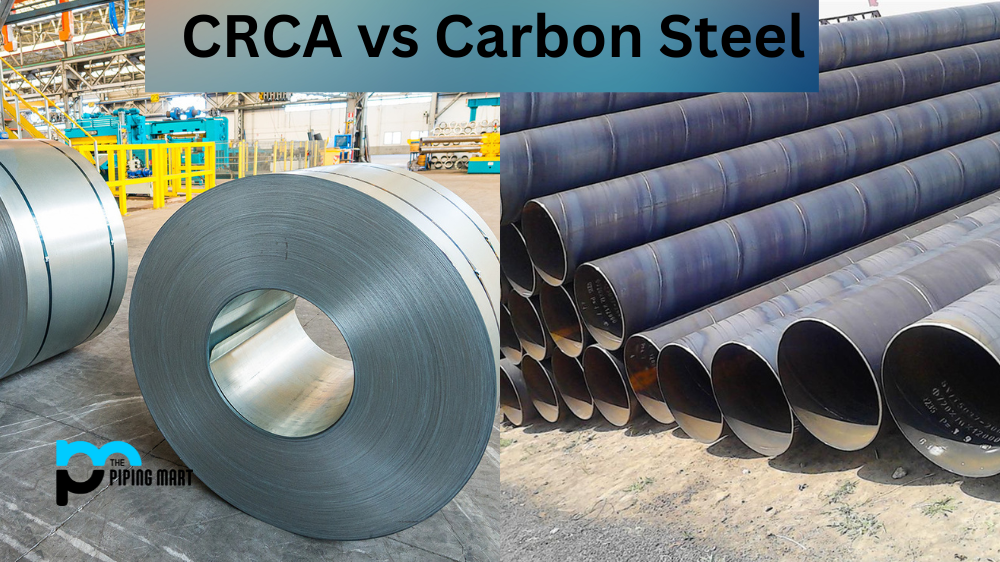Steel is one of the most widely used materials in the manufacturing industry, and when it comes to strength and durability, two types stand out from the rest: Cold Rolled Close Annealed (CRCA) and Carbon Steel. Both materials have unique properties that make them ideal for different applications, but choosing the right one for your project can be daunting. In this blog post, we’ll explore the differences between CRCA and Carbon Steel, their characteristics, and the applications where they shine the most.
What is CRCA Steel?
CRCA is made by cold-rolling steel coils through a press and then annealing them in a low-oxygen environment. This process produces a thinner, more uniform metal sheet with enhanced strength, rigidity, and surface finish. The annealing process softens the metal, making it easier to work with and less prone to cracking or breaking. CRCA is commonly used to manufacture consumer goods, household appliances, automotive parts, and construction materials like roofing sheets, pipes, and metal profiles.
What is Carbon Steel?
Carbon Steel is a high-carbon alloy that contains between 0.6% and 1.7% carbon and small amounts of other elements like manganese, phosphorus, and sulfur. Carbon steel is usually used in the industry due to its good tensile strength, and it is a relatively budget-friendly option. Carbon Steel is a popular choice in the construction industry for its high structural stability, especially for buildings and bridges. It is broadly classified into three categories: low-carbon steel, medium-carbon steel, and high-carbon steel.
Difference Between CRCA and Carbon Steel
Characteristics of CRCA Steel
Manufacturers prefer CRCA because of its high tensile strength, low weight-to-strength ratio, and excellent machinability. It is easy to cut, form, and weld, making it the go-to choice for industries that require precise and intricate shapes. CRCA is corrosion-resistant due to the annealing process, which restores the metal’s oxide layer, protecting it from rust and other forms of corrosion. Additionally, CRCA can be easily finished with coatings such as galvanization, painting, or powder coating, which extends its lifespan and improves its appearance.
Characteristics of Carbon Steel
Carbon Steel has a higher density than CRCA, making it more robust and resistant to mechanical wear and deformation. It is stiffer than CRCA, which makes it a good option for applications that require high structural integrity and load-bearing capacities, like piping, support beams, or machine parts. However, Carbon Steel is more prone to rust and other forms of corrosion, making it unsuitable for outdoor use without protective coatings. CRCA is also more difficult to cut and weld than CRCA, requiring specialized machinery and skills.
Applications for CRCA vs Carbon Steel
CRCA and Carbon Steel have different properties and applications, determining their suitability for different industries. CRCA is often used in furniture, appliances, electronics, and automotive parts where surface finish and flexibility are critical. Carbon Steel is used in construction, shipping, heavy machinery, and parts. Both metals offer unique advantages, and the decision mostly depends on the project and the conditions it is exposed to.
Conclusion
In summary, CRCA and Carbon Steel are two of the most widely used materials in the manufacturing industry, each with advantages and limitations. CRCA is more flexible and has a better surface finish, while Carbon Steel is stiffer and stronger, making it better suited for heavy-duty applications. Choosing between the two depends on the required mechanical properties, the project’s budget, and the working environment. With this knowledge, you can decide which type of steel suits your project’s specific needs well.
Meet Heer, a dynamic and driven writer learning tricks of her trade in the metal industry. With a background in Digital Marketing, Heer brings a unique perspective to her writing, sharing valuable insights. Apart from blogging she like reading and hiking.




